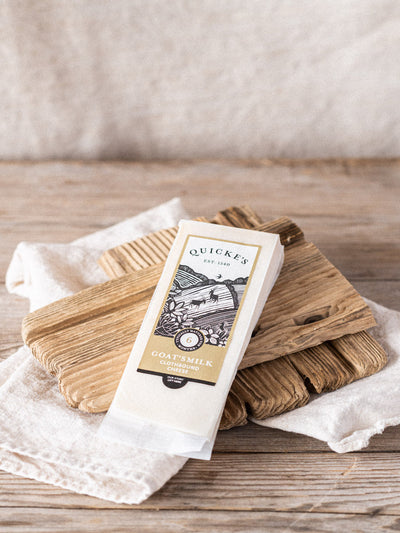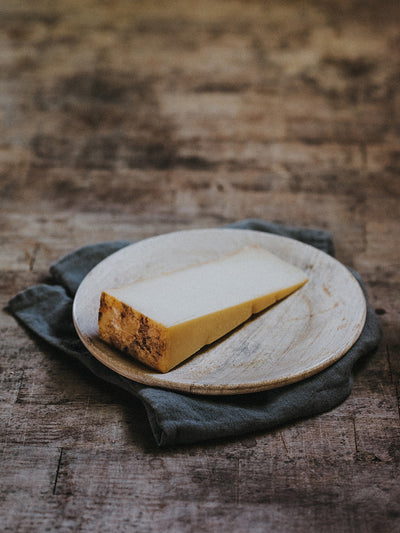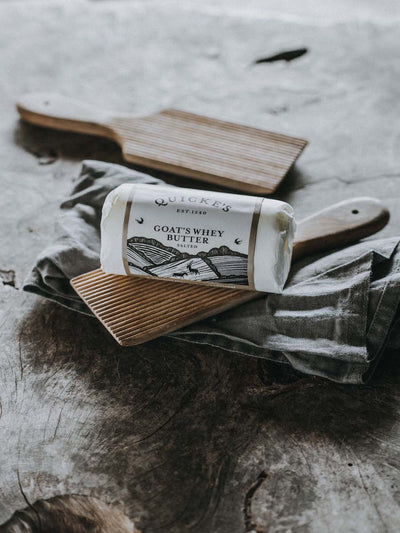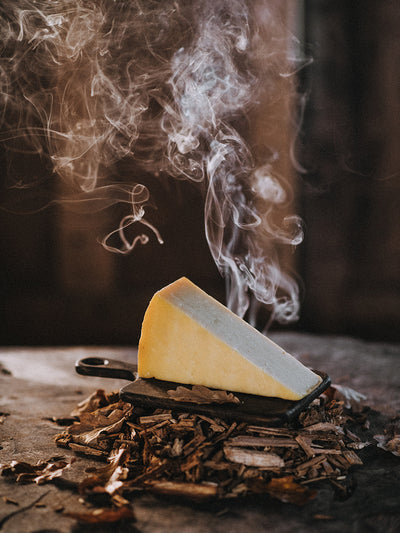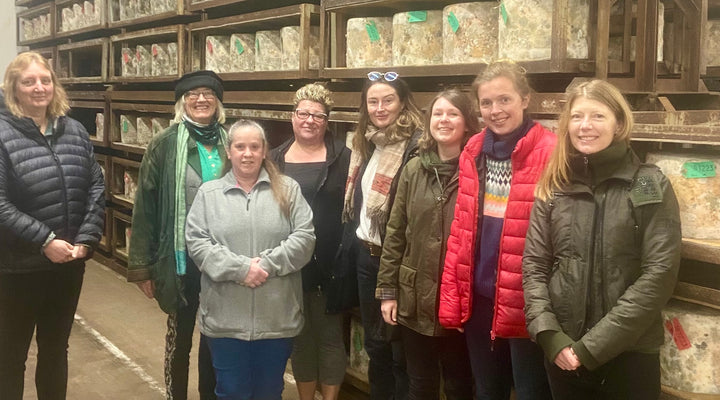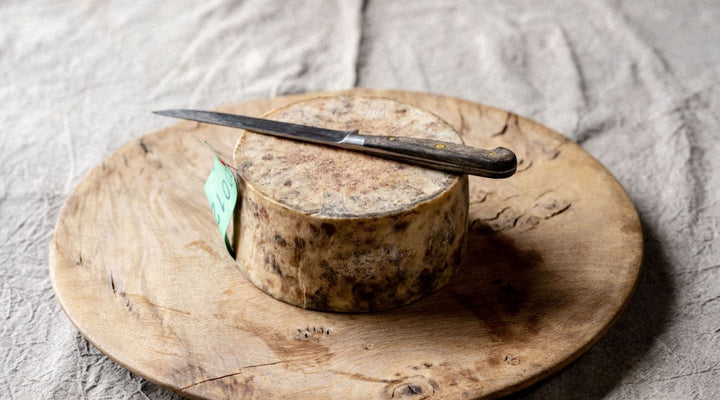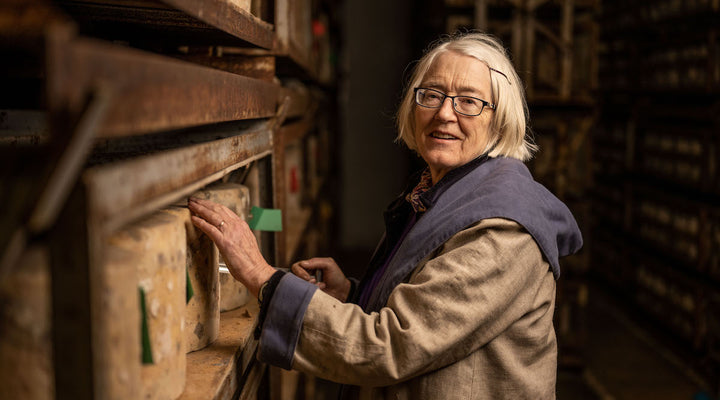Lockdown restrictions due to Covid-19 have meant we're not going to the shops as regularly as we used to, and even if we do, we're met with limited availability of certain items. This, paired with increased time at home has led to people getting creative in the kitchen. Many people have been buying seeds or seedlings and trying their hand at growing food in their back garden, balcony or kitchen windowsill. It seems we're all enjoying getting back to basics - trying to become closer to our food, understanding where it comes from and how to grow it.
Our very own Mary Quicke is the person we turn to when we have a question about growing food, especially salad leaves. Mary tends to her salad leaves all year, picking salad leaves and edible flowers every morning before they are washed and bagged to sell in The Cheese Box.
We asked Mary to share some of her best growing tips and favourite salad leaves to grow.
Growing salad leaves with Mary Quicke
When did you start growing your own food?
I’ve grown salad leaves since I left home at 17. I took a present of some far-out leaves to George Melly when he lived in a fortified tower in South Wales. He liked them, and had eaten leaves like them in Italy.
What salad leaves do you most enjoy?
I’m on the lookout for tastes that enliven a mouthful: lemon verbena, Bolivian coriander, some of the different flavours of basil, Vietnamese coriander and perilla. Edible chrysanthemum leaves give a taste of Japan.
I love the variety of lettuces, chicories and endives – I cut and come again with some good red colours. I like oak leaf varieties, although my favourite is the Chiltern Seeds’ butterhead, Gustav’s lettuce.
All those oriental mustards, cresses, pak chois, mizuna and rockets are mild as baby leaves, and give a funky strength of flavour as they grow up. The buds and flowers are sweet and mustardy at the same time.

Leaves, flowers, and young seeds of the umbels: dill, fennel, cumin, corianders, and carrot leaves give a gorgeous aromatic hit, each part tasting quite different.
Of beet and spinach leaves, the most well behaved is ‘Red Kitten’; and a little astringency is a good foil for the other flavours. Tree spinach seeds itself, growing with purple blush on its leaves.
Pea and broad bean shoots are lovely if you can spare then from producing peas and beans. Even if you can’t, pinch the tops of your broad beans when they start flowering, and eat them. That stops aphids, and gives a beany bite. Fenugreek is a great fast growing funky flavoured legume.
I like wild and tame garlic leaves, chives, welsh onions for flavour and for being perennial. Perennials are the bones of my salad garden: minutina, stridolo, agretti, sorrels, salad burnet, oyster plant, marjoram, mints, salsify and scorzonera leaves. The more you pick, the more tender leaves they produce.
There are annuals that seed themselves: land cress, chervil, miner’s lettuce and corn salad as well as the mustards. I don’t dig, I mulch areas I want to plant with weeds and grown out plants, and with some selective weeding, the soil is fertile and ready for planting when you remove the rotted mulch, and may come up with a good selection of edible seedlings. I sow seed into a little line of seed compost put into a v-shape I pull in the soil, to show where I’ve planted, and to give the sown seedlings a head start against all the other seedlings.
How do you know what you are growing and eating is safe?
It’s important to know your poisonous plants. Hemlock looks scarily like chervil: I always sniff the chervil when it’s young to be sure. If anyone else is picking for me, that is the first thing I show them. There is a wild cress that tastes nastily bitter, and looks similar to land cress. I taste the plants and root out all the bitter ones. Fools’ parsley looks similar to Italian parsley, and is poisonous.
What about wild salads?
There are a few wild plants I pick: chickweed and shepherd purse are good value in the depths of winter when they are tender and growing when not much else is.
The edible flowers in your salads are gorgously colourful. Can you tell us a little about them?
Edible and flavoursome flowers like marigold and borage seed themselves. Primroses are great from late winter to late spring and come every year, as do scented pinks. Violas are beautifully scented. I grow aromatic roses to pick from late April until the last rose I save for a salad on Christmas Day. Nasturtiums are fresh and peppery. Cornflower are bright, although not tasty. The sages, thymes lavender and rosemary give small flowers with an intense flavour hit. I love the almond flavour of woodruff: it colonises shaded corners.

How often do you plant?
I plant every couple weeks through the season, with a last sowing in October and a first sowing in February in the polytunnel. As soon as the polytunnel is free of Tom’s Mediterranean vegetables, I plant it up with salad vegetables to give leaves through the winter, and plant them out as soon the polytunnel is needed again for the tender plants.
Garden Salad Recipe
Mary recommends balancing out the bitterness of her favourite leaves, mature Gustav’s lettuce, with apple cider vinegar and the salt and unami of Quicke's Mature Cheddar.
Freshly-picked Mary's Garden Salad and Quicke's Mature Cheddar are both available to buy on weekdays from The Cheese Box. You can visit us from 10am-4pm or call and place an order for delivery nationwide.
Call: 01392 851000
Email: cheesebox@quickes.co.uk

